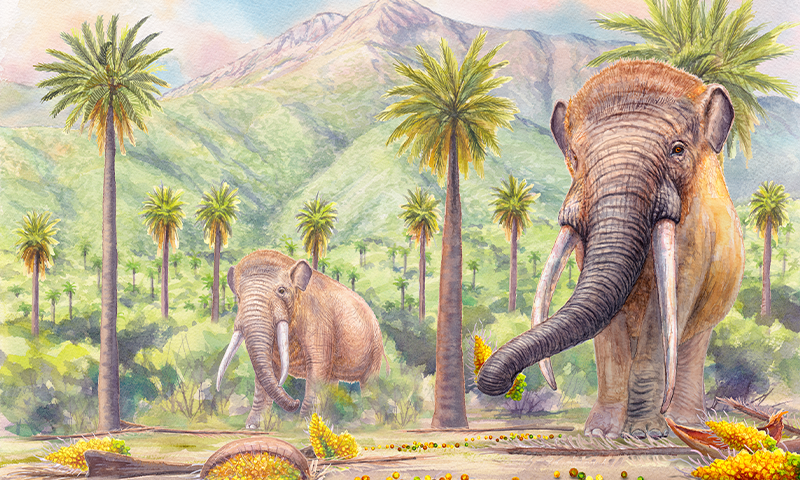Now Reading: How Ancient Animals Shaped the Journey of Sweet Fruits
-
01
How Ancient Animals Shaped the Journey of Sweet Fruits
How Ancient Animals Shaped the Journey of Sweet Fruits

Swift Summary
- Scientists have uncovered fossil evidence showing that South American mastodons (Notiomastodon platensis) consumed large fruits such as the Chilean palm during the Pleistocene epoch, supporting a theory first proposed over 40 years ago.
- Fossil teeth discovered across sites spanning over 900 miles in Chile contained residues and tissues associated wiht fleshy fruits.
- These mastodons helped distribute seeds over long distances-about 10 times farther than modern animals-and consumed significantly more seeds compared to smaller fruit-eating species today.
- The extinction of mastodons around 10,000 years ago has impacted heavily fruited tree species by reducing their genetic diversity and seed dispersal capacity; some trees face threats to survival without similar ecological partners.
- In central chile, approximately 40% of these plant species are currently threatened due to fragmented populations and human activities like fruit harvesting from trees such as the Chilean palm.
- Tropical regions with animals like tapirs or monkeys filling evolutionary gaps are faring better than areas such as central Chile,which lacks effective replacements for extinct giants.
Read More: How Ancient Beasts Spread sweet fruits
Indian Opinion Analysis
The findings spotlight how past interactions between fauna and flora can leave lasting ecological legacies. For India, this research emphasizes the importance of understanding similar dynamics in its own biodiversity-rich landscapes. Large animals such as elephants play critical roles in seed dispersal for fruiting trees within various Indian ecosystems. The global analysis underscores that losing key animal species compromises genetic diversity and forest regeneration.
India could draw lessons from these studies to prioritize conservation efforts for both large mammals and native vegetation. Human activity-like habitat destruction or excessive exploitation-remains a significant challenge here as well. Ecological modeling based on past relationships helps highlight what is at stake for biodiversity when keystone species are lost.
Preserving ancient interdependencies ensures long-term sustainability not only within forests but also across broader climate mitigation strategies reliant on healthy ecosystems-a priority that resonates globally but holds particular urgency for India’s environmental future.




























